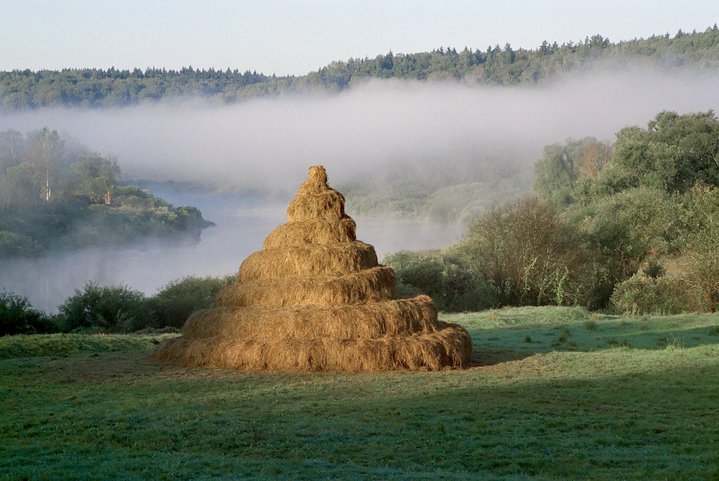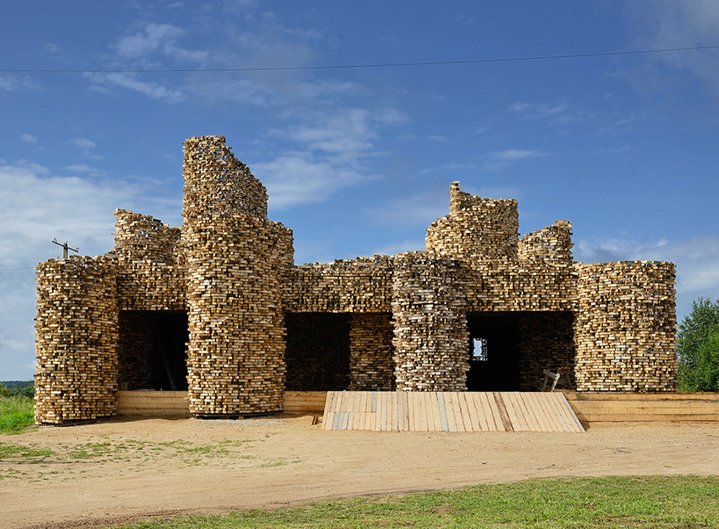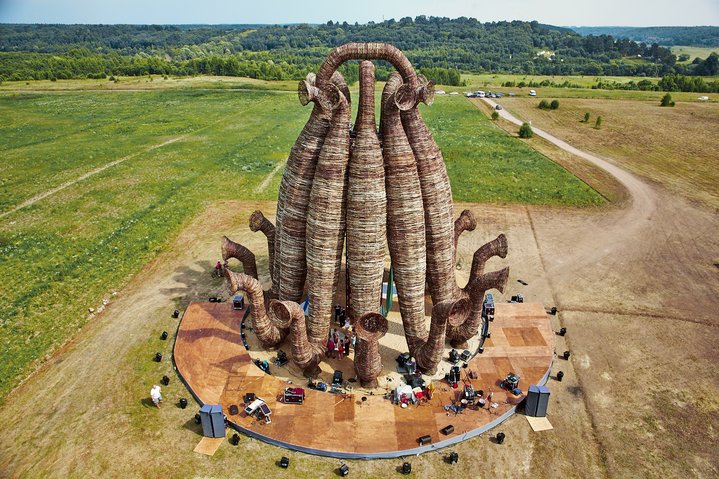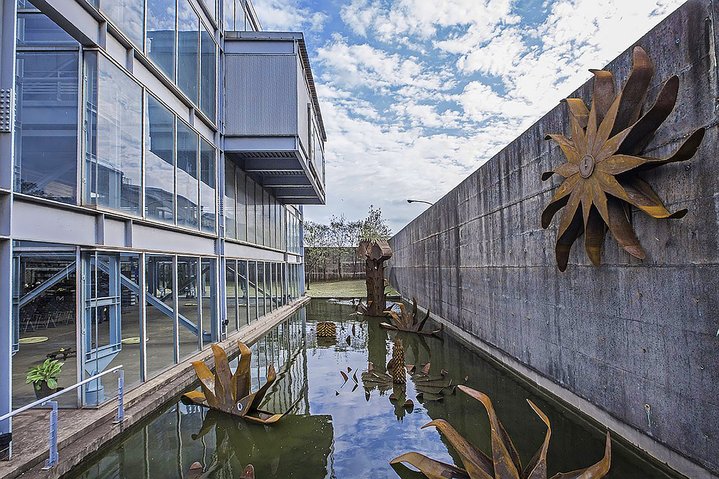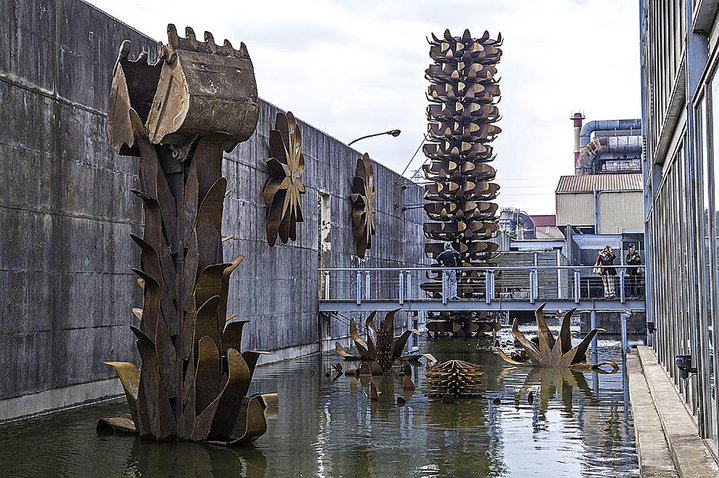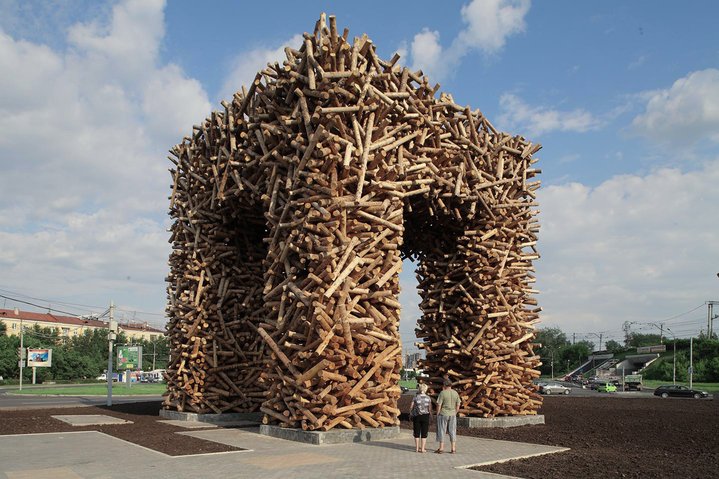Nikolay Polissky: art for life

Nikolay Polissky. Photo by Andrew Freeburg
The Russian artist Nikolay Polissky has created a new take on land art by reviving a tiny village over 200 km from the Russian capital. It is now home to a legendary annual festival called Archstoyanie.
It all started nearly 20 years ago when the painter Nikolay Polissky (b. 1957) had a vision during a trip to Nizhny Novgorod with a group of Moscow artists. “I was looking out at a snowy field when all of a sudden, all these snowmen began to stand up in rows,” he recalls.
Determined to bring that vision to life, Polissky on his return from that trip headed for the tiny village of Nikola-Lenivets in Russia’s Kaluga Region, where the artist and two of his friends had in 1989 bought land and built dachas where their families could spend the summer.
Together with one of his dacha neighbours, Vasily Shchetinin (1965-2017), and the gallerist Marat Guelman, Polissky was counting on the villagers’ help to turn his vision into a work of art.
“We understood that we would be hopeless at working in any scale in the cold,” Polissky recounts. “We made a snowman and a half, then everyone else left, but I stayed and talked with Uncle Yura (a local villager). I told him: ‘Get some men together. I’ll pay you 10 rubles a snowman.’ Then I went home and nearly forgot about it all. Two weeks later, I got a call from Uncle Yura. His message was: ‘Why haven't you come by?’" He arrived to find an army of snowmen marching up the hill, which lasted for less than a month.
However, photographs of that installation were exhibited in Moscow and caught the eye of the art elite.
Polissky founded the “Archstoyanie” festival near that village in 2006 as a creative outlet for Russian conceptual architects and has kept the management in the family. Yulia Bychkova (the daughter of Shchetinin’s wife), who studied painting under Polissky while still in art school, now curates the event with her husband, Anton Kochurkin.
What appeared as a result of their work is now a sprawling sculpture park along the Ugra River, just 220 kilometers from Moscow. The festival’s founder insists that its success is due first and foremost to the villagers, “a resource that nobody else in the world has. […] Without them, not a single one of these sculptures would have been possible.”
“I test everything that I do on these people, and I don’t make them do all kinds of artistic nonsense. They’re doing regular work, the kind that they’re used to, but the end result has to be something that they like, because that success is the only thing that I have to offer them in the end. Without the little money I can provide and the chance to be proud of this place, all this would be a completely empty endeavor.”
Polissky doesn’t believe that what he does is land art in the traditional sense. “Land art doesn’t need an audience. It’s a protest against commercialism. There are no protests here.”
As the scale of the park’s activity has grown, the entire surrounding community has become inseparable from “Uncle Kolya,” as the locals affectionately call Polissky.
From cutting tonnes of hay for 2001’s “Hay Tower” (his homage to Bruegel’s “Tower of Babel”) to painting and weaving the 17,000 vines that will form this year’s new object, “UgRouen” (a tribute to Monet’s series of cathedrals), these craftsmen have mastered the region’s natural materials and weathered ridicule, all while never using artificial materials or unnaturally altering the landscape.
Having delegated curatorial duties to Bychkova and Kochurkin and park management to his son, Polissky is more concerned with the ideological sanctity of the park. Along with the curators, he reviews every application for participation in Archstoyanie, guided by his own principles of working with local materials, people, and context.
He immediately turns away artists he suspects of trying to make a name for themselves on the back of the festival and jokes that he prefers to invite architects because “they leave less trash behind.”
The park’s site currently lists 37 objects, but Polissky continues to honour his tradition of burning those that have lived their full lives. Larger installations are physically impossible to dismantle, and if they cannot be preserved or naturally disposed — “Hay Tower” was for instance initially destined to serve as feed for livestock — the natural solution has been to set them on fire.
More recent participants want to see their work preserved and one dismantled object was even rebuilt by popular demand.
Polissky last year drew heated criticism for setting fire to a wooden sculpture that closely resembled a church, entitled “Flaming Gothic.” Polissky maintains that it was not in fact a church, but he nevertheless felt compelled to publicly apologise “as a Christian” on the Russian Orthodox Church’s Forgiveness Sunday.
This year’s spring celebration was not affected by the controversy. In fact, the number of visitors the festival only increased.
When asked about the future of the park, Polissky answers simply: “When the student is ready, the teacher will come.” The world is full of places ripe for such intervention, but he is quick to note that the key lies in understanding not just the local context, but the audience as well. “This is not art for art’s sake; this is art for life.”
“The locals don’t need creativity, and I’m not going to force it on them. Some of them are artisans in their own way. But for them, this is just work — a craft,” Polissky explains.
Nikola-Lenivets is an isolated place, from which many yearn to escape. Yet all of its residents feel a keen sense of belonging. They love what they have built. Polissky notes that there has never been a single vandalism problem with locals in the park’s history. They even feel a sense of ownership over their shoddy roads. As Polissky puts it: “God forbid they [the government] fix them, they might then want to build a hotel here.”
But even Uncle Kolya can’t shake the feeling that he is not “one of them.” The feeling is only stronger for visitors, be it their first time or the fifteenth.
Archstoyanie. A territory for 321 performers
Curators: Yulia Bychkova, Anton Kochurkin
Kaluga Region, Russia
26–28 July






